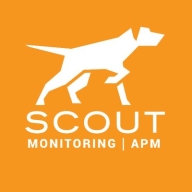

Find out what your peers are saying about Datadog, Dynatrace, Splunk and others in Application Performance Monitoring (APM) and Observability.


Elastic Observability is primarily used for monitoring login events, application performance, and infrastructure, supporting significant data volumes through features like log aggregation, centralized logging, and system metric analysis.
Elastic Observability employs Elastic APM for performance and latency analysis, significantly aiding business KPIs and technical stability. It is popular among users for system and server monitoring, capacity planning, cyber security, and managing data pipelines. With the integration of Kibana, it offers robust visualization, reporting, and incident response capabilities through rapid log searches while supporting machine learning and hybrid cloud environments.
What are Elastic Observability's key features?Companies in technology, finance, healthcare, and other industries implement Elastic Observability for tailored monitoring solutions. They find its integration with existing systems useful for maintaining operation efficiency and security, particularly valuing the visualization capabilities through Kibana to monitor KPIs and improve incident response times.
Scout APM is an application performance monitoring solution that simplifies the troubleshooting process by enabling developers to discover and repair performance problems before clients ever notice them. Scout APM uses a developer-based UI with real-time alerting and intuitive tracing logic to identify bottlenecks precisely to the source code. This helps to greatly reduce time and effort needed to debug code and results in greater productivity and improved outcomes.
Scout APM facilitates the ability of developers to break down, discover, and prioritize performance issues such as N+1 queries, latent database queries, memory bloat, and more, and accomplishes these results at a fraction of the cost. Scout APM monitors Elixir, Node.js, PHP, Python and Ruby.
Scout APM is built by developers, for developers.
Scout APM Features
Reviews from Real Users
“The solution is stable. It's pretty easy to set up, especially if you have the knowledge base and/or you have a partner assist you. The product can scale. The processes are great. It helps with services and microservices. The product is great for many different industries, including energy, government, finance, and more. It's allowed our company to be more forward-thinking and to consider the future a bit more. ” - Antonio B., Regional Manager LatAm at Splunk
We monitor all Application Performance Monitoring (APM) and Observability reviews to prevent fraudulent reviews and keep review quality high. We do not post reviews by company employees or direct competitors. We validate each review for authenticity via cross-reference with LinkedIn, and personal follow-up with the reviewer when necessary.